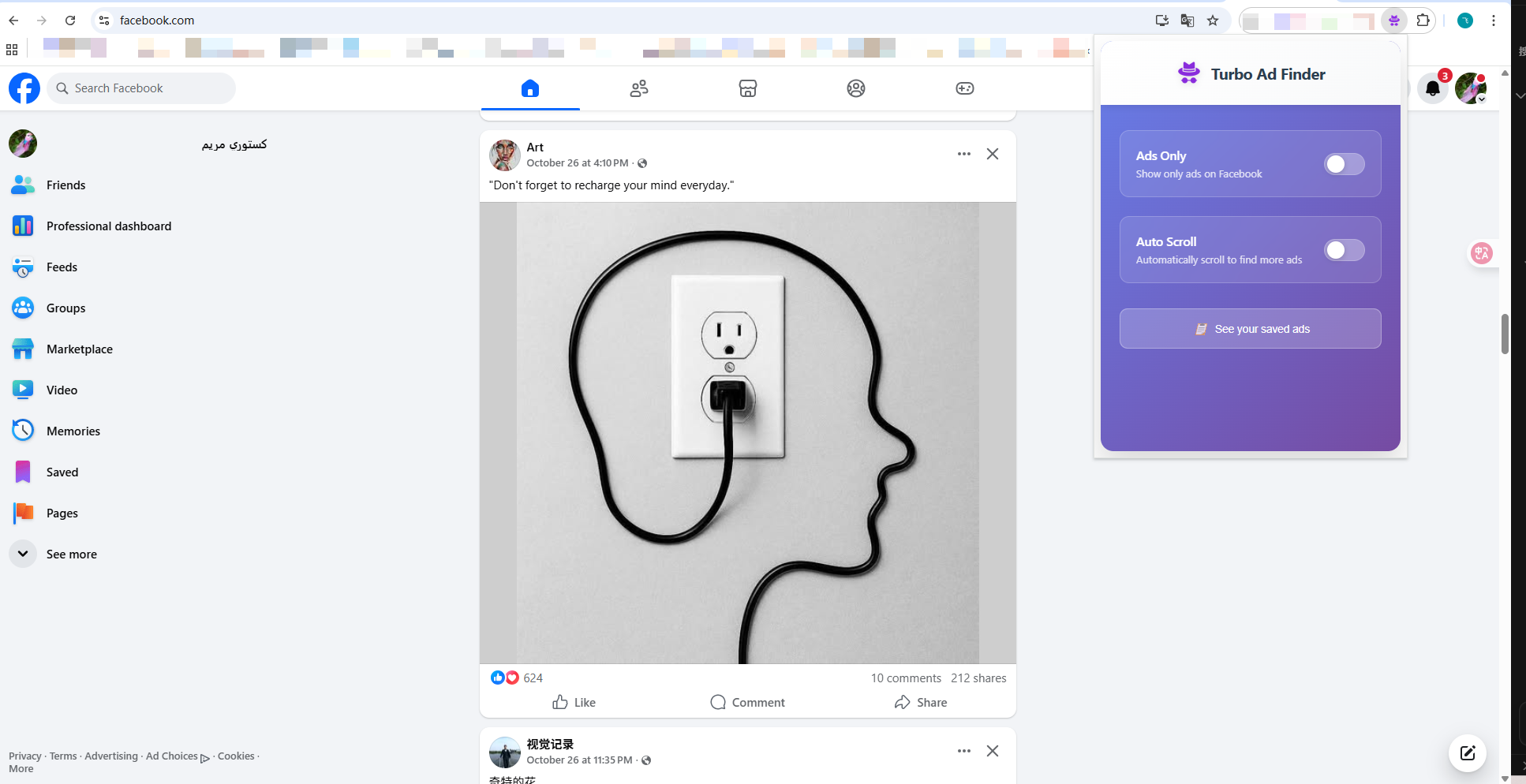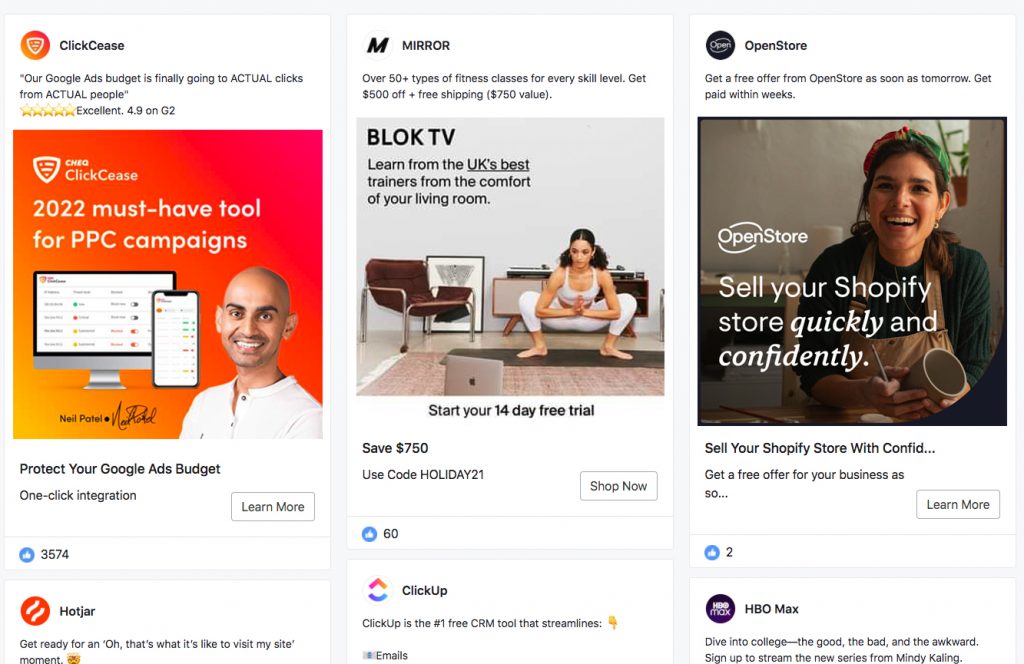Best Free AdSpy Tool for Facebook - Turbo Ad Finder
Discover profitable products easily—Turbo Ad Finder is 100% free and effortless to install. Instantly filter your Facebook news feed to show only ads, perfect for dropshippers and marketing professionals looking for winning products.

Totally Free
Turbo Ad Finder is a free tool and will never charge in the future.
Easy Installment
No complicated settings, just one click to use.
Over 30K Users
Since the first release in 2018, been trusted by over 30K users.
Automatically get all ads you need
Want to spy on your competitors ads? By scrolling on your facebook news feed, you can find trending products, ads for similar products, competitor's ads and ads inspirations.
Get Started
Why Choose Us
Automatically saves all ads you see
While you browse Facebook with our extension, we'll automatically keep track of every ad you see—no need to worry about missing anything. If you're short on time to scroll manually, you can also let our auto-browse feature collect all the ads for you.

Testimonials
We have heard great user experience
Mila McSabbu
Shopify
It was awesome tools for new dropshipper, you will find winning products for your shopify store.
Damian Mendoza
Affiliate
It is very easy to use and perfectly suits the use case. Give me great ideas on Ad Copy.
John Doe
Shopify
Great tools, works perfectly, some little bugs, but let's not cry about it, after all it's a free tool.
